Exploring the Beauty and Science of Phantom Crystals
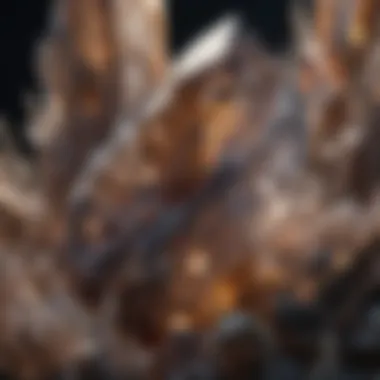
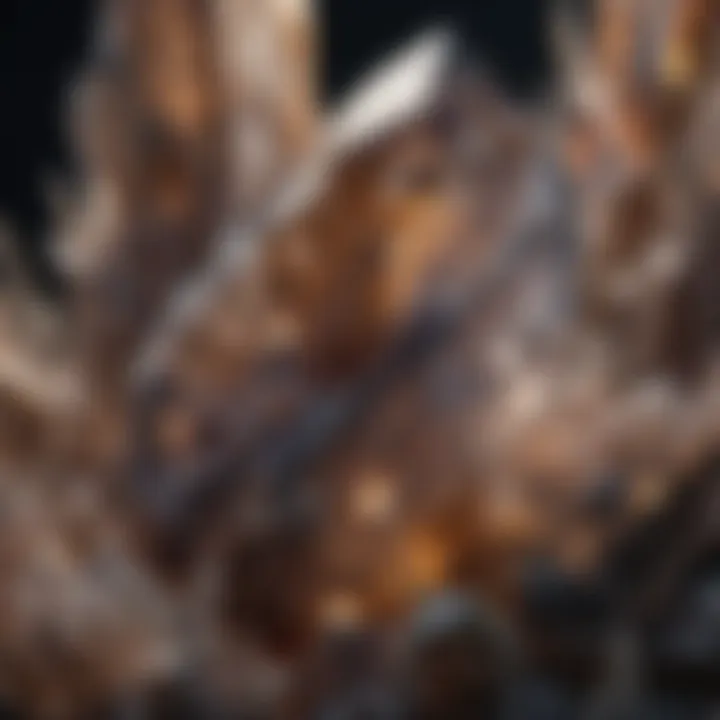
Intro
Phantom crystals, often shrouded in intrigue, capture the curiosity of rock and mineral enthusiasts. These formations, characterized by their unique internal structures, exhibit a captivating interplay of colors and clarity that goes beyond the mere aesthetic appeal. Understanding phantom crystals involves more than just appreciating their beauty; it unveils a journey through geological time and the myriad forces that shape our planet. As we delve into their history, formation processes, and their standing in the collector’s market, we unveil the multifaceted nature of these stunning geological phenomena.
History and Origins
Phantom crystals are more than just collectible specimens; they carry with them stories written in the annals of the Earth’s history. Each phantom crystal provides a window into the geological conditions that prevailed during its formation. Knowing their origin can enrich a collector's appreciation and deepen one’s connection to the Earth itself.
Overview of Collectibles, Rocks, and Fossils
In the realm of collectibles, rocks and fossils hold a special place. Enthusiasts will often remark that
- Each piece tells a story. Just as history books narrate the past, so do geological specimens reveal insights about ancient environments and climatic shifts.
- Condition matters. The state of the crystal can significantly impact its value, making the collector’s eye for detail crucial.
- Rarity is key. Not all phantom crystals are created equal. Some are exceedingly rare, making them prized possessions for collectors.
Phantom crystals often capture the attention due to their vibrant zones of color, which arise from the interplay of environmental factors during crystallization. Whether it's quartz, calcite, or amethyst, understanding the origins can elevate a collection from mere assembly to a curated showcase.
Historical Significance and Cultural Impact
Over the centuries, various cultures have ascribed significance to phantoms. In some traditions, they are thought to hold spiritual powers. Collectors often reference ancient societies that utilized these crystals not only for decorative purposes but also for healing and protection. Such cultural narratives enhance the allure surrounding these formations.
"In every crystal lies a tale of its journey; understanding its path adds depth to its beauty."
Identification and Classification
Recognizing and classifying phantom crystals may seem daunting at first, but with a little guidance, enthusiasts can discern the true characteristics of their specimens.
Guide to Identifying Rocks and Fossils
To identify a crystal, one should consider several aspects:
- Clarity: The presence of phantoms often implies a level of clarity that varies from specimen to specimen.
- Color Zoning: The unique coloration can indicate different mineral inclusions or environmental conditions during formation.
- Formation: Knowing whether the crystal formed in igneous, sedimentary, or metamorphic conditions can provide clues about its age and origin.
By examining these features, collectors can make informed decisions regarding the authenticity and value of their specimens.
Common Types and Variations
Phantom crystals appear in various forms, each with its own unique charm. Some notable types include:
- Amethyst Phantom Crystals: These display deep purples paired with transparent zones, often sought for their stunning visual appeal.
- Clear Quartz Phantoms: Known for their included growths, they often showcase layers that tell a story of their development.
- Calcite Phantoms: Featuring a range of colors, from honey yellows to striking greens, calcite phantoms captivate with their vibrant hues.
By familiarizing oneself with these classifications, collectors can enhance both the quality and enjoyment of their collections.
Prelude to Phantom Crystals
Phantom crystals stand at the crossroads of nature's artistry and geological storytelling. These unique formations not only captivate the eye but also provide profound insights into the intricate processes that govern mineral development. Understanding phantom crystals is more than an exploration of their beauty; it reveals a portal into the dynamic forces of our Earth’s past. In this article, we will unpack the defining features, historical significance, and the allure these crystals hold for collectors and geologists alike.
Defining Phantom Crystals
Phantom crystals are essentially the ghostly imprints of previous growth stages encapsulated within a mineral structure. This phenomenon arises when conditions change during the formation of a crystal, resulting in the development of new layers while retaining a trace of the earlier structure. It’s like peeling an onion — each layer is a different phase of the crystal's life.
Typically, quartz is the most recognized carrier of phantom formations, showcasing these captivating inner shapes often in the form of shadowy outlines. However, phantom characteristics can also appear in other minerals, such as calcite and fluorite, broadening the spectrum of interest for enthusiasts. In essence, a phantom crystal is a beautiful testament to the geological narrative, preserving a snapshot of its evolving journey through time.
Historical Context
The fascination with phantom crystals extends back centuries. Early mineralogists prized these specimens not only for their aesthetics but also for what they signify about Earth's geological changes. In several cultures, these crystals were considered to possess unique powers, often linked to spiritual enlightenment or protection. However, the scientific community only began to systematically understand these formations in the 19th century.
Noteworthy explorations in the late 1800s shed light on how these crystalline structures could tell us about temperature and pressure variations in Earth's crust. Such revelations enriched our understanding of mineralogy and emphasized the interconnectedness of geological processes. Collectors today continue this rich tradition, seeking out phantom crystals as both collectibles and as pieces of Earth’s storied history.
"Phantom crystals not only dazzle the eye but also whisper the compelling tale of Earth's ever-changing landscape."
In summary, phantom crystals are a blend of art and science, more than mere collectibles. They embody the rich history of geological evolution and present a narrative that invites collectors and enthusiasts to dive deeper into their natural wonder.
As we journey through the subsequent sections, we will delve into forming, defining characteristics, and the role phantom crystals play in both aesthetics and collection.
Geological Formation of Phantom Crystals
The geological formation of phantom crystals presents a captivating insight into the intricate dance of nature's elements over time. Understanding how these unique structures come into being not only enriches our appreciation of them but also informs collectors about their value, rarity, and the conditions necessary for their formation. Phantom crystals are not mere ornaments; they are chronicles of the Earth's geological history, encapsulating processes that took millions of years.
Crystallization Process
When we think of crystals, we often picture sparkling gems, glimmering in the light; however, the crystallization process that births phantom crystals is far from straightforward. To grasp the essence of these formations, one must first appreciate how minerals transition from a powdered state to solid crystals.
During the crystallization process, minerals get deposited in a solution or molten rock, slowly forming solid structures as temperature and pressure fluctuate. Phantom crystals may exhibit layers of differing colors or transparency, revealing their growth stages.
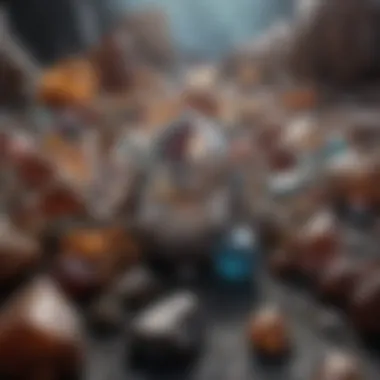
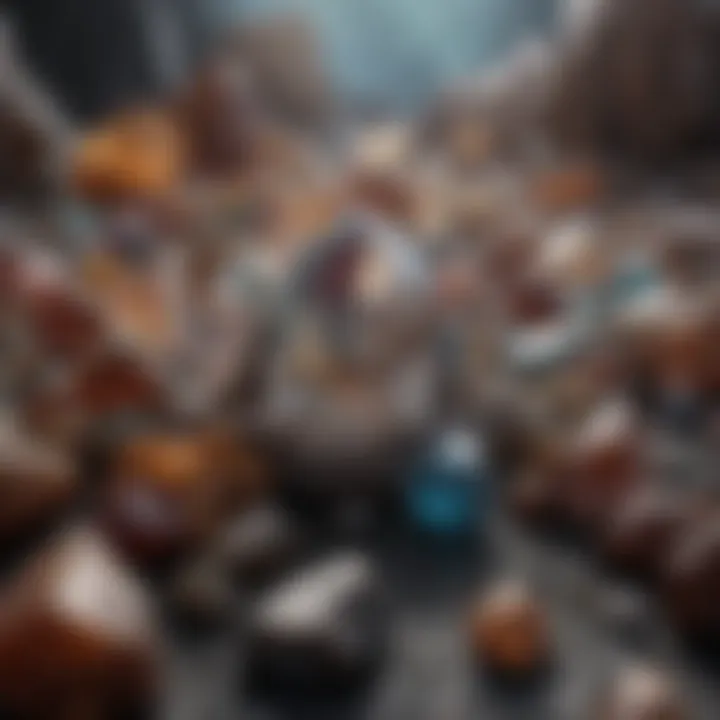
- Initiation of Growth: The process starts when the environment stabilizes. As minerals dissolve, they cling together, gradually developing a crystalline structure.
- Layer Formation: Elements may get introduced to the crystal at different times. For instance, when conditions shift, say, through cooling, layers of different mineral compositions may form, creating the phantoms within the crystal.
- Final Solidification: As the environmental conditions steady further, final layers solidify, entombing earlier formations and giving phantom crystals their unique looks.
Collectively, these processes blend together the physical, chemical, and thermal dynamics that play a role in crafting these stunning geological specimens.
Conditions Influencing Formation
For phantom crystals to emerge, specific geological conditions must be met. Various factors can drastically alter how these crystals develop, affecting their appearance and structure.
- Temperature and Pressure: High temperatures might encourage rapid crystallization, while varying pressures can change how elements combine. For example, lower pressures promote the growth of larger crystals, while intense pressure conditions may lead to smaller, denser formations.
- Impurities in the System: The presence of other minerals can introduce unique patterns and colors to the crystals. These impurities might alter the growth conditions, leading to unexpected layers within the phantom.
- Fluid Dynamics: How fluids move through crystal-forming environments greatly influences the build-up of minerals. Turbulent fluids can disrupt orderly growth patterns, surprisingly adding character to the resulting crystal formations.
- Geological Activity: Earthquakes, shifts, and other geological events can redistribute materials, creating new environments conducive to crystal growth.
Such variables weave a complex web of influences that contribute to the final form of phantom crystals. Understanding these conditions equips collectors with a deeper knowledge of what makes their specimens so striking and sought after, allowing them to appreciate the marvellous interplay of nature's forces at work.
"Phantom crystals remind us that even in the depths of the Earth, beauty emerges from chaos—a true testament to the art of geological storytelling."
Identifying Phantom Crystals
Identifying phantom crystals is a critical skill for any collector or enthusiast who seeks to appreciate these unique geological wonders. In the world of mineralogy, recognition not only involves the ability to name the crystal types but also an awareness of their unique properties and characteristics. Phantom crystals offer a distinctive look at the mineral formation process, which serves as a narrative of the environmental conditions and changes that occurred during their development. Understanding how to identify them not only enriches the collector's experience but also enhances the appreciation for the complex geological history behind each piece.
Key Characteristics
Phantom crystals possess a variety of key characteristics that set them apart from other minerals. First and foremost are their phantom inclusions, which appear as ghostly silhouettes within the crystals. These inclusions are often formed from mineral deposits that occurred during different stages of the crystal’s growth. They can take on various shapes and colors, reflecting the specific minerals that contributed to their formation.
Another notable feature is the striations on the surface. These parallel lines can indicate the growth patterns and phases that the crystal underwent. While many minerals exhibit striations, in phantom crystals, they have a unique significance as they hint at the intermittent growth periods of the crystal.
In terms of color, phantom crystals may showcase an array of hues, often layered. For example, a quartz phantom may display a clear exterior that transitions into a vibrant purple or green interior, presenting a visual representation of its complex formation history.
To summarize, here are the primary characteristics of phantom crystals:
- Phantom inclusions: Ghostly shapes exhibiting prior forms of mineral layers.
- Striations: Growth lines that illustrate the maturation of the crystal.
- Color variations: Distinct and layered colors that tell the story of its development.
Visual Examination Techniques
When it comes to visual examination of phantom crystals, collectors need a keen eye and the right tools to appreciate their full beauty and intricacies. Here are several techniques employed to examine these geological masterpieces:
- Lighting: Natural sunlight can unveil the layers and colors within a phantom crystal. A flashlight can also help in spotting inclusions and striations that might be hidden in dull lighting.
- Magnification: Utilizing a loupe can elevate your observation experience, allowing you to see minute details that are often overlooked by the naked eye. With a magnifying glass, the subtle nuances of the inclusions become more pronounced, deepening your understanding.
- Rotational Inspection: Slowly rotating the crystal can showcase how lighting interacts with different angles, revealing layers and textures. Each turn can offer a fresh perspective, sometimes changing the perceived color or clarity.
- Background Contrast: Place the crystal against various backgrounds, including dark and light surfaces. This technique can highlight different features such as transparency and color depth.
"The art of observing phantom crystals lies not just in seeing, but in understanding the stories they tell about their transient life below the earth's surface."
By honing these techniques, collectors can cultivate a deeper appreciation for phantom crystals. Learning to identify their unique properties is not a skill developed overnight but rather a journey that enriches every encounter with these geological marvels.
Types of Phantom Crystals
The diverse world of phantom crystals is a captivating aspect that intrigues many collectors and mineral enthusiasts alike. Understanding the different types of these crystals can greatly enhance appreciation for their beauty and uniqueness. Each variety carries its own special story and significance, shaping the way they are perceived and collected. This section sheds light on quartz phantom crystals and other mineral variants that contribute to the vast array of phantom crystals available in the market today.
Quartz Phantom Crystals
When it comes to phantom crystals, quartz takes center stage. Quartz phantom crystals are remarkable for their unique internal formations, which appear as ghostly images within the clear structure of the crystal. These phantoms can arise from various factors, such as the growth of minerals within the quartz that later become encapsulated.
- Visual Features:
- Formation Process:
- Symbolic Properties:
- Each quartz phantom exhibits distinct color variations, ranging from shades of white and gray to hints of purple or green combined with translucence.
- Their clarity often provides a stunning contrast against the phantoms, making them genuine conversation pieces.
- Quartz crystals generally form in igneous and metamorphic rocks. The presence of other minerals during the crystallization phase leads to these intriguing forms. For instance, additional minerals like iron or manganese may create shades within the structure, adding depth to the already mesmerizing appearance.
- Quartz phantom crystals are often sought after for their believed healing properties. Many collectors appreciate the notion that they can bring insight and clarity of thought. They symbolize a journey of self-discovery, representing the layers of growth and experience which may lie beneath the surface.
Other Mineral Variants
While quartz phantom crystals are the most prominent, other mineral types also create unique phantoms. These variations offer collectors a broader spectrum to explore, each bringing something special to the collection.
- Amethyst Phantoms:
- Calcite Phantoms:
- Fluorite Phantoms:
- Amethyst, a violet variation of quartz, can also exhibit phantom structures. The contrasting colors enrich their aesthetic appeal, making collectors eager to add them to their troves.
- Calcite crystals can encapsulate phantoms that range in color from clear to vibrant oranges and yellows. Their layered appearance often results in striking visual patterns that can captivate any onlooker.
- Known for their vivid colors, fluorite phantoms showcase hues of purples, greens, and blues that can dance through the mineral’s structure. The clarity combined with angular form takes their visual allure a notch higher, also attracting many mineral enthusiasts.
Each type of phantom crystal adds layers not just to the individual's collection, but also to their stories and meanings, creating a richer narrative that resonates with collectors and enthusiasts alike.
The Aesthetic Appeal of Phantom Crystals
The visual allure of phantom crystals captivates not just avid rock collectors but also anyone with an eye for beauty in nature's creations. These formations, often bearing faint impressions of previous growth stages, tell a story that couples an engaging aesthetic with intriguing geological history. As we delve into the theme of aesthetic appeal, it's essential to understand how the color variations and crystal clarity contribute to their overall charm and desirability in the collecting community.
Color Variations
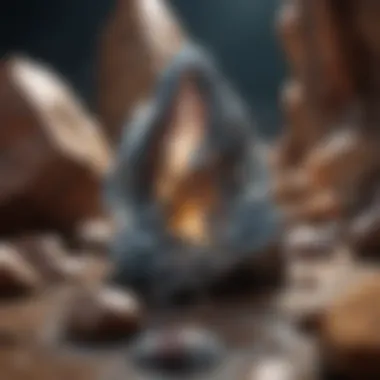
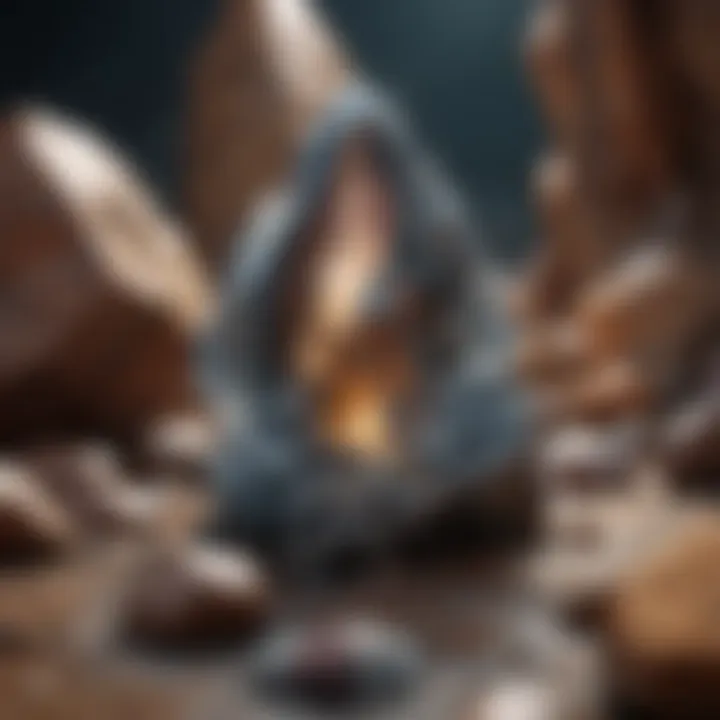
Phantom crystals are famous for their dynamic color displays, which range from rich, deep hues to delicate, almost ethereal pastel shades. These colors aren't just trivial decorations; they signal various geological processes that these crystals have endured over time.
For example, quartz phantom crystals might originate with a clear base that subsequently develops colorful inclusions due to mineral deposits during different growth phases. The interplay of colors provides insight into the crystal's environment and the elements present while it formed. Some common colors include:
- Amethyst: A purple variation known for its calming effect and regal appearance.
- Citrine: A bright, sunny yellow that draws enthusiasts happy to have a splash of warmth in their collection.
- Smoky Quartz: Ranging from gray to deep black, this variation gives an earthy touch that resonates with those who appreciate a more natural look.
Collectors often find that specific colors can evoke emotional responses or symbolize traits. For instance, green can signify harmony and growth, while blue may promote tranquility. Because of this connection, the aesthetic dimension of phantom crystals not only adds beauty but also carries personal significance for those who collect them.
Crystal Clarity and Patterns
While the colors of phantom crystals are certainly arresting, the clarity and unique internal patterns are equally significant in defining their aesthetic appeal. An ideal specimen often showcases a stunning transparency that allows collectors to appreciate the full complexity of its inner structure.
Patterns within the crystal, such as feather-like inclusions or layered bands, provide a mesmerizing view, almost like looking into the pages of a storied book. These features can differ radically from one crystal to another, leading to a design that feels distinctly personal.
Key elements to look at include:
- Phase Lines: These lines mark the transitions between different growth stages, resembling tree rings in traditional woodworking, adding a sense of history to each piece.
- Inclusions: The organic shapes formed by imperfections can be incredibly beautiful, giving each specimen its own fingerprint in the vast world of minerals.
- Luster: The shininess of the crystal's surface plays a pivotal role in how light interacts with it, enhancing the internal colors and patterns.
In the end, a collector's appreciation for a phantom crystal often hinges on a combination of its visual allure and personal connection. The fusion of color, clarity, and pattern culminates to create not just a decorative piece, but a cherished fragment of Earth’s history.
"A phantom crystal is more than just a stone; it’s a window into the Earth’s timeline, forged through layers of color and clarity that speak volumes of beauty and complexity."
Whether through elaborate collections or simple admiration of these fascinating formations, the aesthetic appeal of phantom crystals cannot be overstated. They stand as enduring symbols of nature's artistic prowess.
Phantom Crystals in Collecting
Phantom crystals hold a distinct allure for collectors, merging the realms of geology, aesthetics, and personal engagement. Their multifaceted nature not only captivates the eye but also offers a window into the past, revealing geological processes that shaped them.
Collectors often view these crystals as a blend of art and science. Each phantom crystal tells a story, showcasing the conditions of its formation; this can turn an ordinary specimen into a remarkable conversation piece. Collecting phantom crystals isn’t merely about ownership, but about appreciating the uniqueness that each piece represents in the grand tapestry of Earth's geological history.
Understanding the market dynamics surrounding phantom crystals can empower collectors. It involves recognizing value factors, which include the rarity, clarity, and unique characteristics of each piece.
Market Demand and Valuation
Currently, the demand for phantom crystals in the collecting community demonstrates a promising trend. Collectors are keen on seeking specimens that not only fit their aesthetic preferences but also hold potential for future value appreciation.
- Rarity plays a critical role: Certain types of phantom crystals are harder to come by, driving up their desirability.
- Condition and Clarity: Crystals that display pristine conditions with exceptional clarity attract higher price points. As collectors often say, "a flawless piece is worth its weight in gold."
- Documentation: Provenance can bolster valuation. Crystals with detailed lab reports showcasing their unique properties will typically earn a collector’s eye—and purse.
"In collecting, the story behind the crystal can sometimes be more valuable than the crystal itself."
Understanding these aspects allows collectors to make informed purchases and develop a strategic approach to growing their collections.
Curation and Presentation
Once collected, the way phantom crystals are curated and presented can significantly enhance their appeal and perceived value. Just as fine art is displayed thoughtfully, crystal collections benefit from a deliberate arrangement and aesthetic considerations.
- Display Cases: Utilizing high-quality display cases protects crystals from environmental damage like dust and sunlight, while enhancing visibility.
- Informative Labels: Adding labels that describe the geological background and unique features of each crystal can enrich the visitor's experience. It invites curiosity and preserves the story of the piece.
- Thematic Grouping: Organizing crystals by color, type, or formation can create an enticing visual narrative. This strategy can help viewers appreciate the vast variety within a collection.
Caring for Phantom Crystals
Caring for phantom crystals is more than just regular maintenance; it’s an integral part of preserving their beauty and value. These unique formations not only tell a story of geological history but also reflect the dedication of their collectors. Understanding the specifics of their care offers benefits that extend beyond mere aesthetics. Proper maintenance preserves the crystal's structural integrity and keeps it in pristine condition for years to come.
Cleaning Techniques
Keeping phantom crystals clean is essential for exhibiting their full beauty. Here are some techniques that can be employed:
- Gentle Dusting: A soft, dry brush can effectively remove dust without scratching the surface. Think of it as giving your crystal a light massage, treating it with the delicate touch it deserves.
- Warm Soapy Water: For a deeper clean, fill a bowl with lukewarm water and add a couple of drops of mild dish soap. A common mistake is the assumption that hot or overly soapy water is better; however, too much heat can fracture many kinds of crystals. Submerge the crystal briefly, then rinse it under cool water to avoid sudden temperature changes.
- Ultrasonic Cleaners: Some collectors swear by ultrasonic cleaners, especially for more intricate pieces. These devices use sound waves to gently remove dirt and fingerprints. However, it's vital to double-check that your crystal can withstand this method before diving in.
- Avoid Harsh Chemicals: While it might be tempting to use commercial cleaners, they often contain active ingredients that can etch or harm the surface of crystals. Always err on the side of caution; if it’s not natural, it shouldn't touch your precious stones.
"A little care goes a long way; clean crystals reflect the heart of their caretakers."
These cleaning techniques not only enhance the physical appearance of the crystals but also contribute to their longevity. After all, each clean reveals more about the phantom’s unique characteristics while preserving its story.
Storage Considerations
When it comes to storage, the way phantom crystals are kept can make or break their condition. Storing these beautiful formations correctly ensures they remain a treasure rather than turning into a potential loss. Below are some considerations for proper storage:
- Use Soft Cases: Cloth or velvet-lined boxes provide ample protection against scratches and chips. It's like giving your crystal a comfortable, secure home when it’s not on display.
- Avoid Direct Sunlight: Prolonged exposure to sunlight can fade colors and damage specific minerals. A shaded or dark storage option keeps their hues intact.
- Maintain Stable Temperatures: Fluctuations in temperature can cause cracks in certain crystals. Ensure that the storage area maintains a consistent environment, ideally at room temperature.
- Separate Crystals: Stacking or storing crystals together can lead to unwanted scratches or even more severe damage. Use individual compartments or soft cloth bags to keep them apart.
- Regular Checks: Every so often, take a moment to inspect stored crystals. This practice allows you to catch potential issues early, ensuring long-term preservation.
In summary, effective care of phantom crystals requires both gentle cleaning and thoughtful storage. Collectors who invest time in these practices will find their crystals not only shine brighter but also age gracefully, maintaining their appeal for years to come.
Phantom Crystals and their Symbolism
Understanding the role phantom crystals play in various cultures and communities is vital to appreciating their full value beyond mere aesthetics. These unique geological formations are not just cherished for their beauty but are also imbued with symbolic meanings that resonate deeply with many individuals. Collectors and enthusiasts alike often look beyond the physical attributes of phantom crystals, seeking out their cultural significance and the personal narratives they carry. This connection adds layers of meaning that go hand in hand with their geological characteristics, making them even more intriguing.
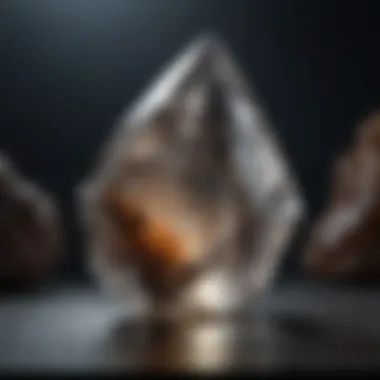
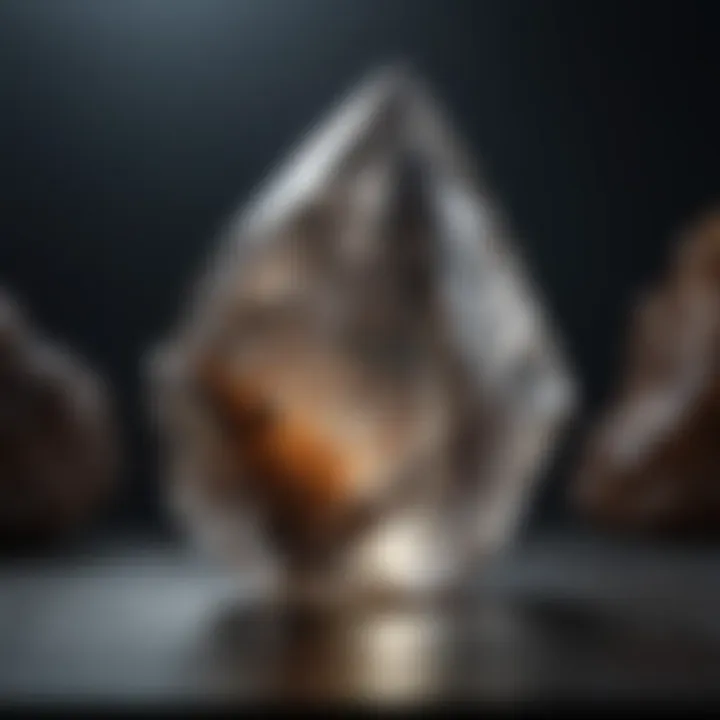
Cultural Significance
Across different cultures, phantom crystals have been attributed a variety of symbolic meanings. In many Native American traditions, crystals, including phantoms, are viewed as powerful tools for healing and connection to the spiritual realm. They believe that the layered formations within the crystals represent the layers of one’s own spirit, aiding in self-discovery and personal growth.
In contrast, some Eastern philosophies, like those in Hinduism and Buddhism, perceive crystals as conduits for spiritual energy. Phantom crystals, with their striking inner formations, symbolize the journey towards enlightenment. They serve as a reminder of the complexity of existence and the unseen forces that shape our spiritual paths.
The idea that these crystals can capture the essence of time and earth places them in a unique position. Their formation process resonates with humans who seek stability and endurance in a rapidly changing world. Many art forms today also incorporate phantom crystals, highlighting their value in contemporary aesthetics and symbolism.
"For the ancients, the stones spoke when words fell short. Phantom crystals whisper stories of time, inviting deeper introspection."
Personal Meaning in the Collecting Community
Within the collecting community, phantom crystals often carry personal meanings that transcend their geological origins. Collectors might seek these crystals as talismans for strength or resilience, embodying their journeys and desires. Each collector may form a distinct bond with a phantom crystal; recognizing its unique characteristics as reflections of their personal experiences.
From sharing tales of discovery in online forums like reddit.com to showcasing them on social networks like facebook.com, collectors create a rich tapestry of stories surrounding their acquisitions. These crystals find their places not just on shelves but in narratives of overcoming challenges, exploration, and connection.
Some collectors view these crystals as a bridge to their childhood memories, where they first discovered the wonders of nature and geology. Others see them as a source of inspiration for creativity, channeling their energy into artistic endeavors.
As collectors delve into the meanings of their phantom crystals, they often engage with others, sharing insights and experiences that intensify their appreciation. There’s something remarkably communal about this aspect, fostering connections among enthusiasts who understand the passion behind each unique specimen.
In summary, phantom crystals extend far beyond their beautiful appearances. They hold deep-rooted cultural symbols and personal stories that elevate them in the eyes of collectors worldwide. Collectors are drawn not only to the geological wonders of these formations but also to the rich meanings they embody.
Scientific Research and Phantom Crystals
Phantom crystals have long piqued the interest of geologists, mineralogists, and hobbyists alike. Their fascinating formations not only unravel the story of Earth's geological processes but also showcase significant scientific interest in studying mineral structures. By engaging in diligent research, scientists and enthusiasts are uncovering important aspects regarding the environments in which these crystals form, their compositions, and how they might provide insights into historical geological events.
Recent Discoveries
Recent studies have revealed a wealth of knowledge pertaining to phantom crystals. One intriguing discovery highlighted the presence of different elements within the layers of these crystals. For instance, researchers found that the growth of the phantoms is often influenced by the availability of certain minerals in the surrounding environment during specific periods of crystallization. Notably, the interaction of silica and other trace elements can result in a variety of distinct colorations, making each phantom crystal unique.
Additionally, advanced imaging techniques like scanning electron microscopy have allowed scientists to visualize the intricate details of phantom inclusions in greater detail. Findings indicate that some phantoms may contain fluid inclusions trapped during their growth phases, which can inform researchers about ancient conditions, such as temperature and pressure, that existed millions of years ago.
These emerging understandings not only add depth to our knowledge of the mineral world but could also provide valuable data that contributes to broader geological fields. The collaboration between different fields of science could lead to unexpected breakthroughs, potentially altering the way we perceive these mystical formations.
Applications in Geology
Phantom crystals serve as more than just aesthetic collectibles; they play an important role in various geological research domains. Here are several of the key applications:
- Paleoclimate Indicators
By analyzing the trapped fluid inclusions, scientists can gather evidence regarding ancient climates, providing a clearer picture of Earth’s atmospheric history and aiding in climate modeling techniques. - Understanding Mineralization Events
The layers within phantom crystals might reflect the conditions at the time of their growth, offering insight into significant mineralization events that impacted local geology. - Geochemical Pathways
The compositional variations found in phantom crystals can highlight changes in geochemical processes that occur during critical junctions in Earth's development.
"Phantom crystals thus become capsules of history, revealing secrets that have been locked away for millions of years."
In summary, scientific research involving phantom crystals not only amplifies our understanding of these unique minerals but also bridges connections between geological phenomena and wider ecological impacts. The continued exploration into their formation and significance lays the foundation for potential future discoveries, vital to geological science.
The Future of Phantom Crystals in Collectibles
Phantom crystals have long captured the imaginations of collectors and geologists alike. As these enthusiasts continue to seek out unique specimens, understanding the future of phantom crystals in collectibles becomes crucial. This segment will delve into the emerging trends and long-term value predictions, shedding light on why phantom crystals will remain a significant part of the collecting world.
Emerging Trends
The landscape of mineral collecting is ever-evolving. Collectors are increasingly drawn to not just the beauty of crystals but also their geological stories. Here are several trends shaping the future of phantom crystals:
- Increased Interest in Sustainability: More collectors are prioritizing sustainability. They seek ethically sourced crystals, leading to a demand shift toward suppliers who emphasize responsible mining practices.
- Online Marketplaces Rise: With platforms like Facebook and Reddit amplifying collectors' voices and interests, the accessibility of phantom crystals is soaring. Virtual exhibitions and auctions provide collectors with a broader reach than ever.
- Educational Value: There's a growing appreciation for the educational aspects of minerals. Collectors often want to know the history—or the mystical significance—behind their pieces, propelling sales of books and courses focusing on crystal education.
- Community Engagement: As social media connects collectors worldwide, communities centered around phantom crystals are forming. These groups share tips, trading opportunities, and experiences. Engaging as a community cultivates a shared understanding of value and rarity in phantom crystals.
Long-term Value Predictions
The outlook for phantom crystals in the collectibles market appears promising despite fluctuations in general mineral market trends. Here are essential considerations regarding their potential value:
- Unique Characteristics: The rarity and unique formations of phantom crystals can drive demand upward. Given their geological intricacies, collectors will likely perceive these specimens as valuable investments.
- Market Stabilization: As more collectors turn to phantom crystals, the market is expected to stabilize. This stability could lessen the drastic fluctuations often seen in collectible prices.
- Cultural Acknowledgment: As understanding of their cultural significance grows, enthusiasts may place higher value on these pieces, potentially driving prices even higher. The fusion of art, beauty, and geology contributes to their status as coveted collectibles.
- Long-lasting Appeal: With an expanding array of uses—from decoration to spiritual practices—phantom crystals are likely to maintain relevance. As trends favor unique decorative items and gifts, the enduring allure of these crystals positions them well for long-term value retention.
"The passion for collecting phantom crystals captures not only the eye but the essence of geological tales, and as long as these stories thrive, so will the market for these natural wonders."
Culmination: The Enduring Allure of Phantom Crystals
In the vast tapestry of mineralogy, the importance of phantom crystals stands out like a starry night against a dark canvas. They carry tales etched into their very structure; an unspoken narrative of natural processes that unfold over eons. As we wrap up our exploration, it's crucial to reflect on the significance of these intriguing geological formations not only for scientists but also for rock collectors and enthusiasts.
Phantom crystals serve as a window into different geological eras, exhibiting distinct features formed under specific environmental conditions. This historical context adds immense value, not just in monetary terms, but also in the appreciation of Earth’s intricate processes.
Final Thoughts on Appreciation
The act of collecting phantom crystals transcends beyond mere possession; it's a journey of understanding geology and the stories these crystals embody. Each piece is unique, much like fingerprints, presenting varied phantoms encapsulated within. As collectors and enthusiasts delve deeper into the nuances of these crystals, they start cherishing the tales of transformation they tell.
Recognizing the beauty of phantom crystals involves more than just observing; it's about fostering a connection to the natural world. The swirling colors, the layered features, and the captivating patterns all highlight nature’s artistry. It encourages individuals to look beyond the surface, discovering a world where time is suspended.
By investing time in appreciating phantom crystals, collectors cultivate an awareness of Earth's dynamic history, learning to respect the minerals and the longer timeframes they represent. Even a brief glance at a well-formed phantom can ignite curiosity and a sense of wonder.
Encouragement for Continued Exploration
The journey with phantom crystals is ongoing, filled with discoveries waiting to be made. It's essential for both new and seasoned collectors to continue exploring this fascinating realm. The more one learns about the formation and significance of these crystals, the deeper their appreciation will grow. Conversations with fellow enthusiasts and participation in community platforms like reddit.com can provide insights and foster a sense of belonging.
Moreover, with scientific research continuously unveiling new information about mineral formations, the landscape of knowledge is always shifting. Engaging with educational resources and participating in symposiums can enrich one’s understanding. Collectors are encouraged to share their findings, experiences, and observations, creating a community that thrives on mutual fascination and respect.



